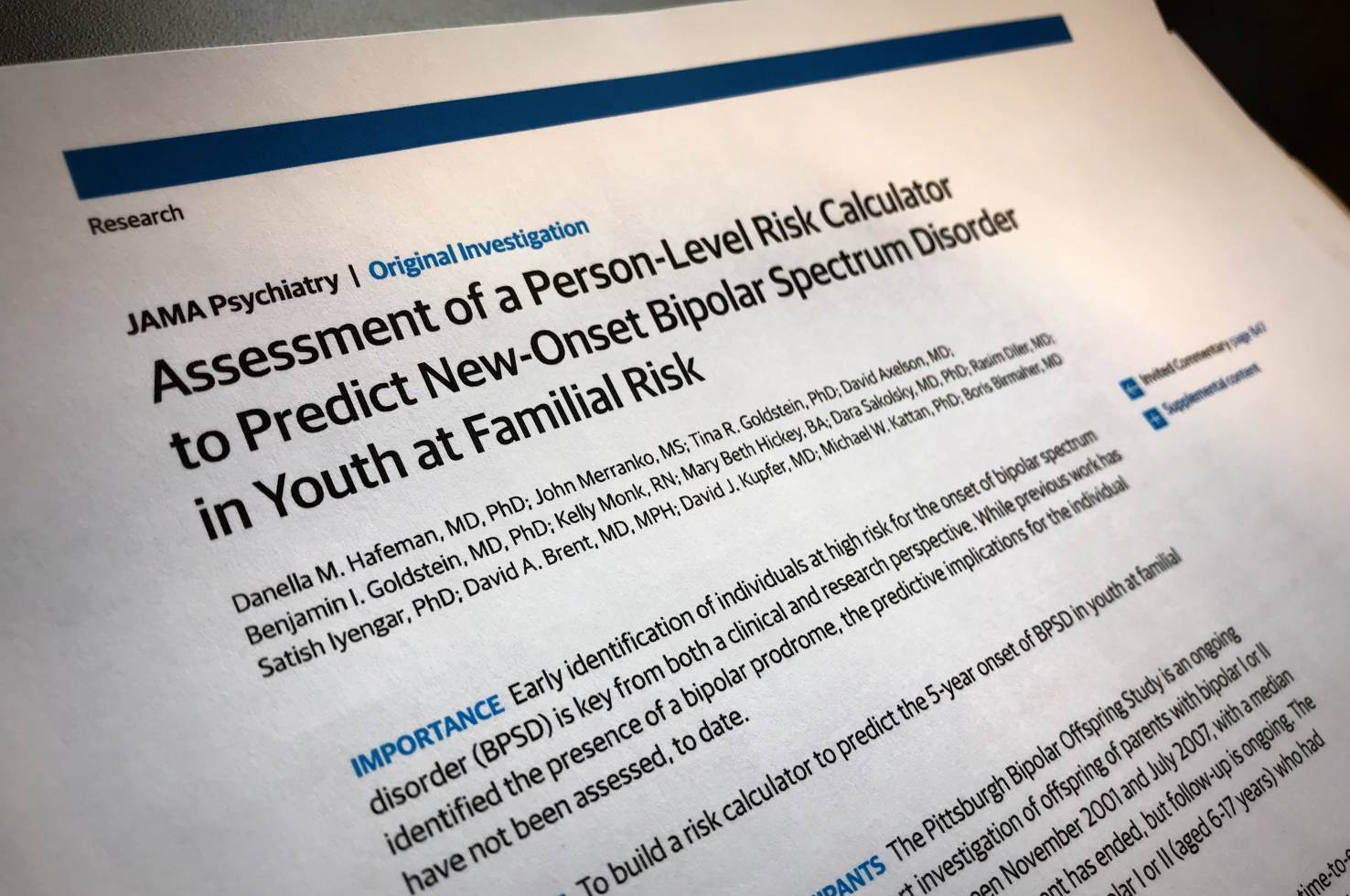Hafeman et al. Report on the Usefulness of a Risk Calculator to Predict New-Onset Bipolar Spectrum Disorder in Youth in JAMA Psychiatry

Early identification of individuals at high risk for the onset of bipolar spectrum disorder (BPSD) is key from both a clinical and research perspective. In this study, Dr. Hafeman and colleagues built a risk calculator to predict the five-year onset of BPSD in youth at familial risk. This study tested the degree to which a time-to-event model, including measures of mood and anxiety, general psychosocial functioning, age at mood disorder onset in the bipolar parent, and age at each visit, predicted new-onset BPSD. To fully use longitudinal data, the study assessed each visit separately, clustering within individuals.
The present analysis included 412 youth (age 6-17 years) who had not yet developed BPSD at baseline. Study subjects were participants of the Pittsburgh Bipolar Offspring Study, an ongoing community-based longitudinal cohort investigation of offspring of parents with bipolar I or II (and community controls) recruited between November 2001 and July 2007. Of the 412 at-risk offspring, 54 developed BPSD during follow-up (18 with BD I or II). Using internal validation to account for overfitting, the model provided good discrimination between converting versus nonconverting visits. Important univariate predictors of outcome were dimensional measures of mania, depression, anxiety, and mood lability; psychosocial functioning; and parental age at mood disorder.
The risk calculator provides a practical tool for assessing the probability that a youth at familial risk for BPSD will develop new-onset BPSD within the next five years, of use to clinicians and researchers. Clinicians will be able to provide prognostic information to the patient and family, as well as guide frequency of monitoring and early intervention. Researchers can use the risk calculator as a metric to identify an ultra-high-risk population with a high chance of developing BPSD over the next five years, which may be useful for assessing biomarkers (e.g., neuroimaging) and for testing preventive measures and early intervention. In addition, the risk score will change and can be monitored over time for indication of a risk trajectory that might shed light on the efficacy of a particular intervention.
Assessment of a Person-level Risk Calculator to Predict New-onset Bipolar Spectrum Disorder in Youth at Familial Risk
Hafeman DM, Merranko J, Goldstein TR, Axelson D, Goldstein BI, Monk K, Hickey MB, Sakolsky D, Diler R, Iyengar S, Brent DA, Kupfer DJ, Kattan MW, Birmaher B
JAMA Psychiatry. 74:841-847, 2017
